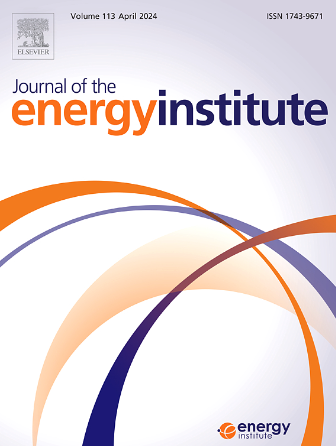Multi-scale exploration of the effects of fuel structure and hydrogen-doped on soot formation
IF 5.6
2区 工程技术
Q2 ENERGY & FUELS
引用次数: 0
Abstract
Due to energy crises and environment pollution, zero-carbon fuel hydrogen (H2) and low-carbon fuel natural gas (NG) as alternative fuels for engines have received widespread interest. Especially, H2-doping in dual-fuel system utilizing NG and diesel presents huge opportunities. To clarify the effects of surrogate fuel structure and H2-doped on the soot formation mechanism, the laminar diffusion flame of CH4 + toluene, H2 + CH4 + toluene, FH2 + CH4 + toluene at 2–8 atm are calculated by the CoFlame code. The CH4 + toluene, H2 + CH4 + toluene, CH4 + n-heptane, H2 + CH4 + n-heptane combustion systems are calculated by Reactive Force Field Molecular Dynamics. Multi-scale perspectives indicate that the effect of toluene on soot propensity is higher than that of n-heptane, due to differences in fuel structure. The hydrogen abstraction-vinyl radical addition, hydrogen abstraction-acetylene addition and the polycondensation of long-chains aliphatic hydrocarbons on the benzene ring are three main pathways for surface growth. Doping H2 will chemically promote the soot formation in CH4 + toluene combustion. It is mainly manifested in the acceleration of the polycyclic aromatic hydrocarbon condensation process and dehydrogenation reaction. In the H2 + CH4 + toluene combustion system, the H/C ratio of the largest soot particles declines. This reduction plays a crucial role in facilitating the maturation of soot. Additionally, the proportion of six-membered rings within the soot particles shows a significant upward trend. Consequently, the molecular structure of the soot particles becomes more stable and the morphology becomes more regular.

求助全文
约1分钟内获得全文
求助全文
来源期刊

Journal of The Energy Institute
工程技术-能源与燃料
CiteScore
10.60
自引率
5.30%
发文量
166
审稿时长
16 days
期刊介绍:
The Journal of the Energy Institute provides peer reviewed coverage of original high quality research on energy, engineering and technology.The coverage is broad and the main areas of interest include:
Combustion engineering and associated technologies; process heating; power generation; engines and propulsion; emissions and environmental pollution control; clean coal technologies; carbon abatement technologies
Emissions and environmental pollution control; safety and hazards;
Clean coal technologies; carbon abatement technologies, including carbon capture and storage, CCS;
Petroleum engineering and fuel quality, including storage and transport
Alternative energy sources; biomass utilisation and biomass conversion technologies; energy from waste, incineration and recycling
Energy conversion, energy recovery and energy efficiency; space heating, fuel cells, heat pumps and cooling systems
Energy storage
The journal''s coverage reflects changes in energy technology that result from the transition to more efficient energy production and end use together with reduced carbon emission.
 求助内容:
求助内容: 应助结果提醒方式:
应助结果提醒方式:


